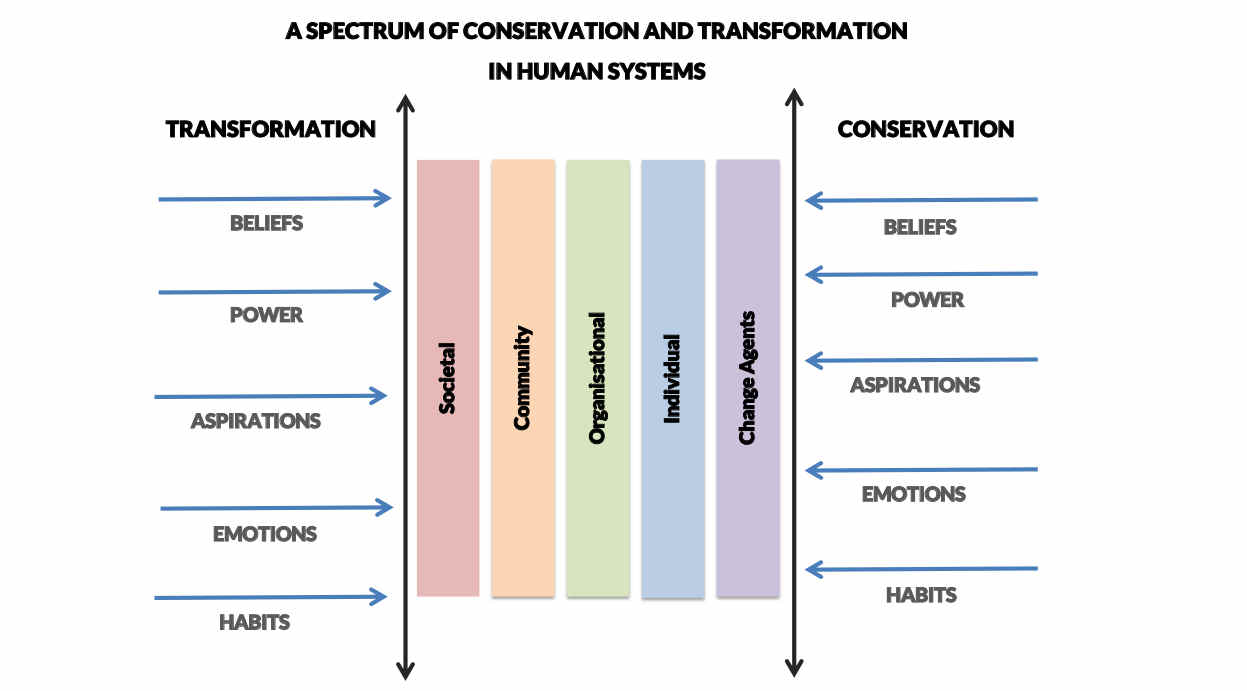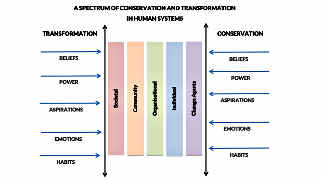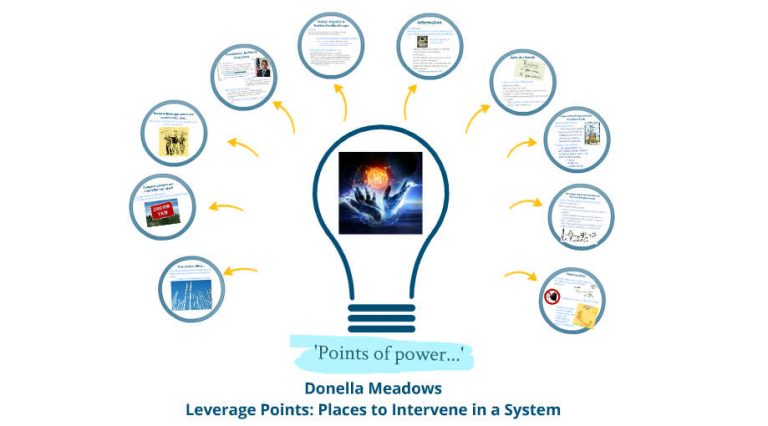Force fields for change-making
Changing human systems starts with understanding them and the glue that holds them together. Human systems are heavily geared towards maintaining themselves and they often actively resist change. They want to conserve themselves. (Equally true for individuals, families, communities, organisations and societies.)

Human systems also have the potential to transform themselves when the need arises. Given a big enough breakdown or an enticing enough offer, our systems can and do transform. Effective transformation happens when the beliefs, power structures, aspirations, emotions and habits that are involved in supporting or resisting change are considered.
Mapping the opposing influences
“A picture is worth a thousand words” – so the force field diagrams of Quality Management are a useful tool for capturing the forces for and against a particular innovation. It’s worth applying them at multiple levels to get a full-spectrum feel for what’s going on – particularly if the change you’re working on is a big change.
Beliefs
As a change-maker, are the beliefs you’re operating from well-grounded? For example, if you’re working for a sustainable future and believe that the problem is “greedy consumers” then you could miss the emerging supply chain revolution and its opportunities.
The beliefs of your organisation could make a difference too, if management believes sustainability is all about compliance and expense.
Power and influence
As social creatures, humans care a lot about power. Knowing who holds it and where is important. This applies to both formal and informal power – the CEO of an organization holds formal power – but who influences the CEO? Family? Friends? Share markets? For example, do you NEED to influence the CEO – or would inspiring the right Engineering Manager get a new technology adopted?
What do you know about the power structures at different levels that could support the change you want? How could you leverage them differently?
Aspirations
What are the hopes and dreams that could be harnessed to push your innovation forward? Whose hopes and dreams could be threatened by what you’re proposing? Which different temperaments could have different aspirations to those that drive you? How could you connect differently to leverage them?
Emotions and habitual moods
In dealing with shifting human systems, it’s critical to move beyond 20th century myths about “rational human beings” and deal with the critical role that moods and emotions play in human behaviour. Not recognising and developing strategies to deal with common chronic moods such as anxiety, resignation and resentment can derail a project far more thoroughly than a technology glitch.
Habits
Neuroscience is increasingly confirming that human behaviour is largely habitual and that breaking old habits (both in thinking and behaviour) can be enormously challenging. In a manufacturing company where “environment” means expensive compliance and “what new demand is the EPA making today?” how could you get heard differently? What are the habits and habitual ways of being that could work for or against what you want to achieve?
What different forces could you be harnessing and how?
What are the human force fields associated with the change you want to see in the world? How could you be more creative and strategic about re-balancing them?







